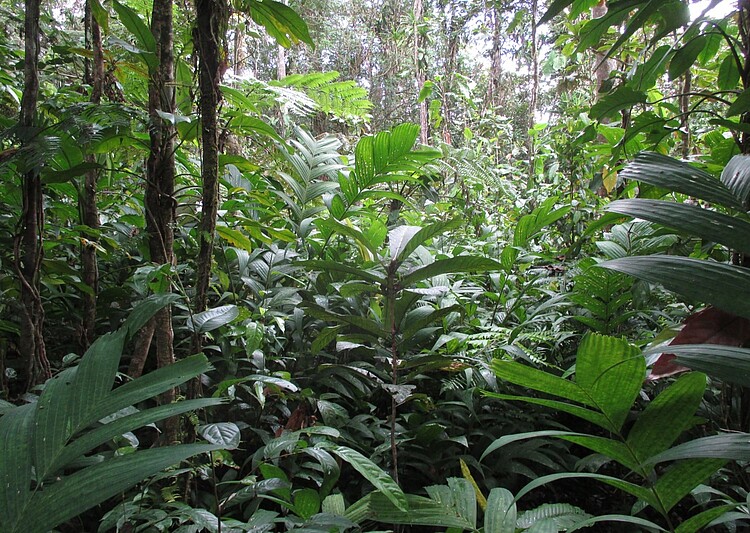Structure and dynamics of a tropical oceanic island rainforest under impact of invasive alien ivory cane palm (Pinanga coronata)

| Led by: | Hans Juergen Boehmer |
| Year: | 2015 |
| Duration: | September 2015 - ongoing |
Invasion by non-indigenous species is one of the most important issues in contemporary applied ecology. Some invasive alien species cause fundamental changes in indigenous ecosystems, including the local extinction of native species. Tropical island ecosystems are particularly susceptible to biological invasions. For instance, several introduced plant species are already dominant in native Pacific forests where they are harming native biodiversity, and negatively impacting forestry and vital ecosystem services provided by forests such as carbon sequestration and freshwater retention. This project evaluates a new and—regarding its potentially negative consequences—unprecedented invasion by ivory cane palm (Pinanga coronata) in the forests of the South Pacific Island nation of Fiji.
The main objectives of the project are to 1) assess the extent to which the invasive ivory cane palm is changing the structure, function, and dynamics of forest ecosystems in Fiji; 2) predict the population growth and further spread of the invasive species; 3) create a data-driven, comprehensive risk assessment to inform management strategies; and 4) support the sustainable management of forests in Fiji and other countries in the tropical South Pacific.
Team: Geon Christopher Hanson, Sherri Y. F. Lodhar, Sunil Gopaul, Michael J. Dyer, Marie-Isabell Lenz, Jean-Benoit Mathieu, Julia Morley, John H. Lowry, Nicholas Rollings, Gunnar Keppel, Stephen Galvin, Estelle Forey, Matthieu Chauvat, Michelle McKeown, Stefan Erasmi, Dominik Seidel, Peter Annighoefer
Funding: The University of the South Pacific (USP), Strategic Research Theme (SRT) Pacific Ocean & Natural Resources; Caribbean-Pacific Island Mobility Scheme (CARPIMS) of the European Commission (Education, Audiovisual and Culture Executive Agency, EACEA); New Colombo Plan (Australian Government, Department of Foreign Affairs & Trade); German Academic Exchange Service (DAAD); Higher Education Partnerships Project “Transnational perspectives in biodiversity education and assessment in the SW Pacific” (partner institution: University of Göttingen, Germany); ERASMUS, European Commission

